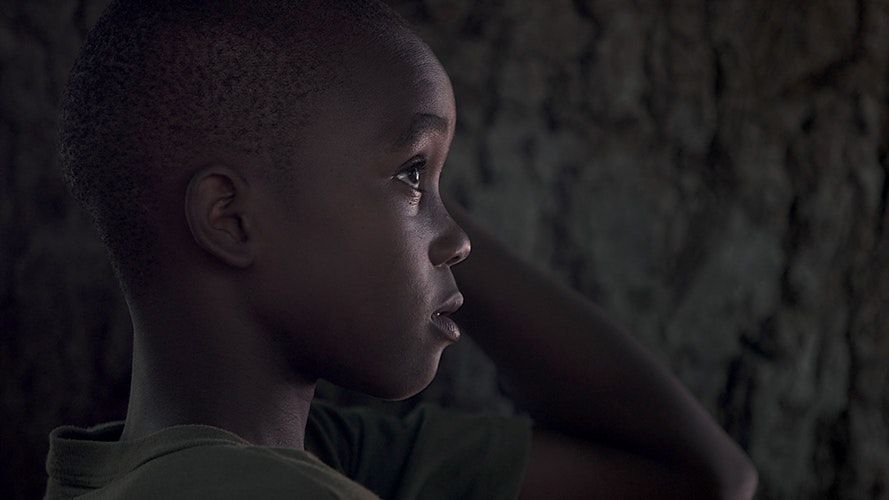I saw my father for the first time when I was 19. He was also 19 at the time.
It wasn’t how I pictured seeing him for the first time. It was more abstract and less tangible than I imagined. He didn’t react when I held him. He didn’t look back at me when I looked at him. He wasn’t trembling like I was. He was an inanimate object, just as he had been my entire life. He wasn’t curious about me like I was about him. He didn’t care about me like I cared about him.
I didn’t stare at him for long. It all happened so fast. I moved my eyes away from him after a few seconds. I had seen all I could see. I had seen all I would see. So I handed the picture of my father back to my mother, and I walked away before she could see me in tears.
That’s the first time I saw my father. That’s the last time I saw my father.
When I was a boy, I didn’t know I was supposed to have a father until other boys made fun of me for it. I didn’t think I needed one. I didn’t know what the word “father” meant. Whatever a father was, I thought mom was that too. I thought she was mom and dad. And in a sense, she was. Mom worked two full-time jobs and raised four children on her own. She was the breadwinner and the bread-maker. She disciplined me and she listened to me. She spanked me and made me cry; she tickled me and made me laugh. She is mom and more.
But mom was rarely home. That isn’t her fault. She didn’t have much of a choice. She did the best she could. She worked from early in the morning till late into the night. She had to. Otherwise, we would have been poorer than we already were.
My father’s absence from home forced mom out of the home too, and it invited others into the home.
When I was 5, when my father and mom weren’t around to supervise me, I walked into a couple engaging in a sexual act. I didn’t know what they were doing. I didn’t understand what they were doing, and it made me curious.
Soon after that, I practiced that sexual act on a girl. I was 5 or 6 years old. She was several years older than me. And when I was 6 or 7 years old, I had sex with a girl 5 or 6 years older than me. I was sexually active with over 5 different girls before I reached puberty.
And I was a violent boy. I was involved in over 15 fistfights before I reached puberty. Lack of supervision tempted me to produce destructive habits that made me an at-risk youth. I was nearly removed from home by child services, and I failed to graduate from high school–I was accepted into college at nineteen as a mature student.
When my father abandoned mom while she was pregnant with me, he set off a chain of events that are all too common with children raised without a father in the home. Children raised in single-parent households are 20 times more likely to develop behavioural problems, 9 times more likely to not graduate from high school, and 2 times more likely to engage in early sexual activity than children raised in two-parent households.
Children raised in single-mother households generally receive less attention and discipline than children raised in two-parent households. That inevitably creates behavioural, educational, and economic disparities between people raised in two-parent households and people raised in single-parent households. And this explains the disparities between Black Americans and White Americans, Black Canadians and White Canadians.
America and Canada do not share the same history, particularly concerning Black people. In fact, they share strikingly different histories. But its Black citizens share same challenges. Social justice groups in these nations maintain that these challenges are produced by systemic racism. But that’s an extraordinary claim without extraordinary evidence.
At one time and in varying degrees, America and Canada had objectively racist laws and policies against Black citizens within their political system. But these nations do not have identifiably racist policies or laws today.
All indications suggest that these nations are not oppressing Black people, Black fathers are.
The virtually identical disparities between Black citizens and White citizens can be traced to disparities between single-parent households and two-parent households within Black families and White families in these nations.
In America, 73% of Black children are born to unmarried Black women, compared to only 29% of White children born to White women. Considering that children raised in single-parent households are much more likely to develop behavioural, sexual, and educational challenges that harm their futures, it’s unsurprising that given the 44% gap between the number of Black children and White children born to unmarried women–there exists similar gaps between Black Americans and White Americans economically and within the criminal justice system.
Despite all evidence and logic, social justice groups suggest otherwise. They claim that all disparities, including even disparities between the number of Black children raised by single parent-households and the number of White children raised by single-parent households are the ramifications of past and present systemic racism in America today.
If that, however, is true, how then do we explain the nearly identical disparities between Black Americans and White Americans to Black Canadians and White Canadians?
Canada has its own history with systemic racism against Black Canadians. Before Britain abolished the slave trade across the British Empire, including Upper Canada in 1833, there were over a 1000 Black slaves in Canada. And as author Edward Osei Kwadwo Prempeh describes in his book, The Politics of Race, in 1849 an 1865, Ontario and Nova Scotia, respectively passed Acts to segregate Black students to their own schools. And in 1911 the city of Edmonton passed a law that banned Black people from moving into the city.
Nevertheless, Canada’s systemic racism against Black people was not nearly as severe or as wide as America’s systemic racism against Black people. Canada, after all, was the land of refuge and liberty to runaway slaves through the underground railroad.
In fact in 1963, during the climax of segregation and the civil rights movement in America, Martin Luther King Jr. visited Canada and said:
“Deep in our history of struggle for freedom, Canada was the North Star – the star followed by the Underground Railroad. We sang of ‘heaven’ that awaited us and the slave masters listened in innocence, not realizing that we were not speaking of the hereafter, Heaven was the word for Canada.”
And though only a rare population of Black Canadians are descendent of Black Canadian or Black American slaves, socioeconomic disparities between Black Canadians and Black Americans are nearly identical.
In America, Black men earn 30% less than White men. In Canada, second-generation Black men earn 28% less than White men.
In America, though Black students are only 24% of the students in southern states, they represent 50% of expelled students. In Canada, though Black students are only 12% of students in Toronto, they represent 48% of expelled students.
In America, though Black people are only 13% of the population, they represent 23% of the people killed by police officers, and they represent 33% of prison inmates. In Canada, though Black people make up only 9% of the population of Toronto, they make up 70% of the people killed by police officers in the city—and though Black Canadians are only 3% of the Canadian population, they represent 9% of the the nation’s prison inmates.
In other words, disparities between Black Canadians and White Canadians are identical—and in some specific cases—worse than disparities between Black Americans and White Americans.
In fact, these disparities are mostly identical to disparities between Black and White citizens across Western nations like Britain and Australia, despite strikingly different histories concerning systemic racism against Black people in these nations.
Systemic racism isn’t the common denominator in these nations. The glaring common denominator and underlying factor for racial disparities in these nations are the universally high number of Black children raised by single-mothers in these nations.
For instance, in Canada 46% of Black children under 14 years old live in single-parent households, compared to just 18% of other children under 14 years old who live in single-parent households. And in Britain, 59% of Caribbean Britons and 44% of African Britons are raised by single-parents, compared to just 22% of White Britons.
These numbers suggest that internal and cultural factors within Black families explain the large socioeconomic disparities between Black people in America and Canada. These nations are not necessarily failing Black people, Black fathers are. And until we finally address this, Black fathers will continue to produce bad fathers who produce bad fathers.
And that cycle will add more burdens to Black mothers, forcing them out of the home to work two full-time jobs to provide for their children, which inevitably adds often insurmountable challenges to their children, triggering early sexual activity and behavioural problems that produce high teenage pregnancies, educational problems, and criminal behaviour that culminate into disproportionately poor levels of socioeconomic status for Black people.
This social justice issue is personal for me. It breaks my heart that at a time when the whole world seems interested in addressing issues affecting Black people, the most vocal social justice leaders in society and within the church seem disinterested in addressing the most pressing issue facing Black people today. It hurts to admit that a large portion of the racial discussions today are mostly missed opportunities and a giant waste of time.
It takes courage to admit that Black fathers are failing their wives and children. It takes courage to admit that the most oppressive people to Black people today are Black fathers, like my father.
Admitting that won’t earn you cheap applause from people who seem more apt to blame White people than save Black children. But that courage will rescue many Black children from our fathers, and from our failures.

